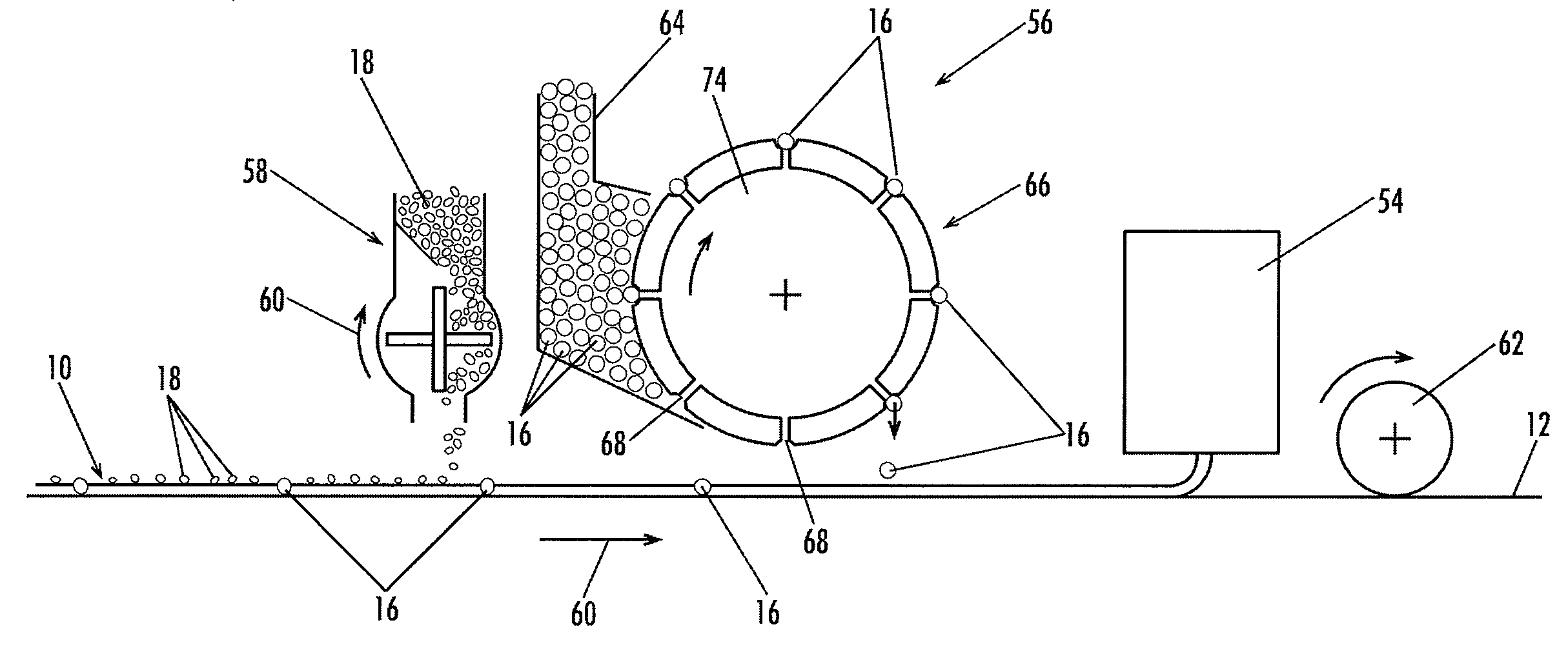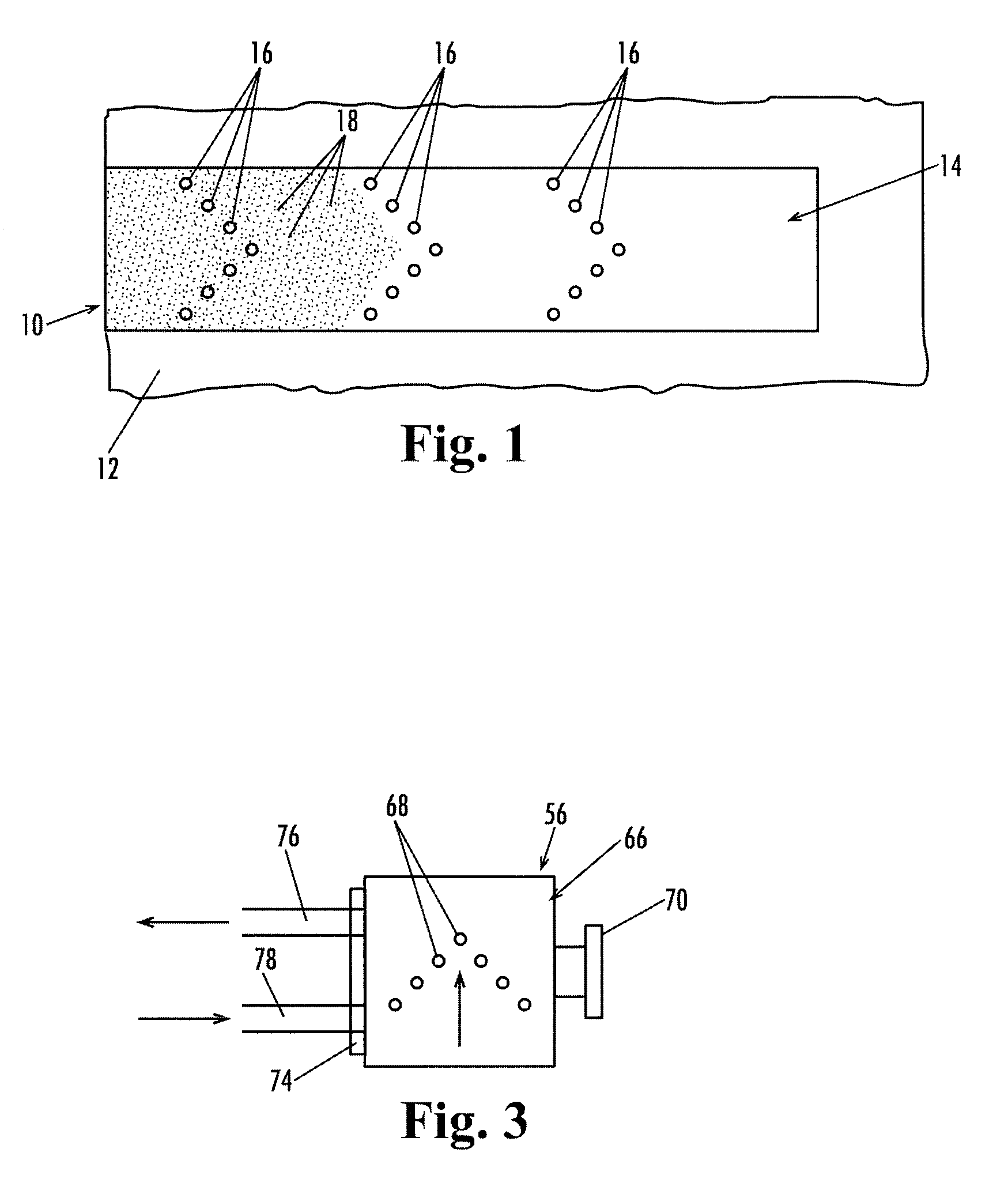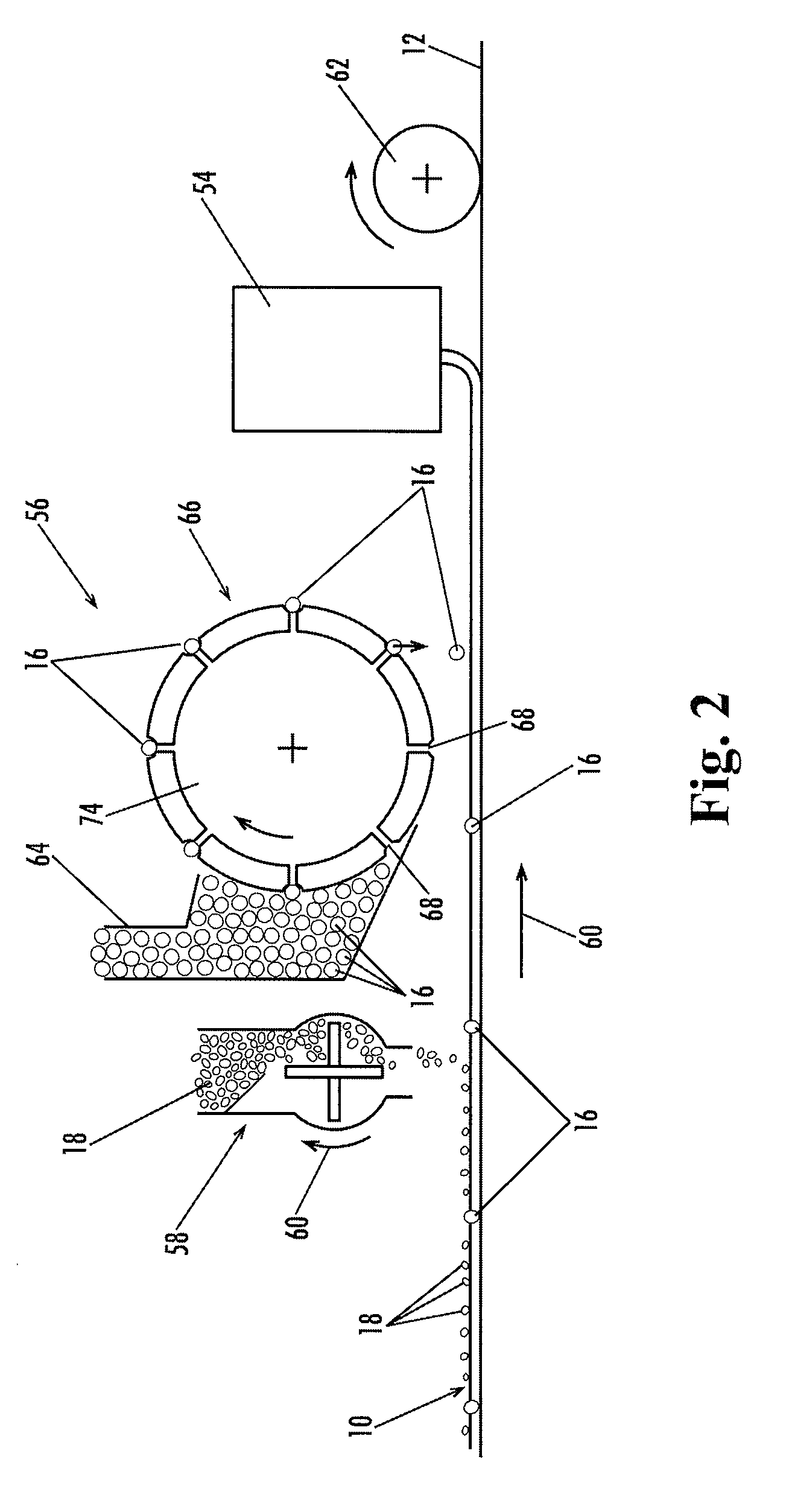Wet Reflective Pavement Marking and Method
- Summary
- Abstract
- Description
- Claims
- Application Information
AI Technical Summary
Benefits of technology
Problems solved by technology
Method used
Image
Examples
example 1
[0037]
Highway glass spheres AASHTO M247 specification:44%1.9 refractive index 100 / 150 sieve glass spheres20%Titanium Dioxide Pigment 1%Yellow 83 Pigment0.5% Butvar B98 Polyvinylbutyral polymer34.5%
example 2
[0038]
Highway glass spheres AASHTO M247 specification:30%1.9 refractive index 100 / 150 sieve glass spheres35%Titanium Dioxide Pigment 8%Butvar B76 Polyvinylbutyral polymer26.8% S-2076 Plasticizer0.2%
example 3
[0039]
Highway glass spheres AASHTO M247 specification:20%1.9 refractive index 100 / 150 sieve glass spheres40%Titanium Dioxide Pigment8%Butvar B98 Polyvinylbutyral polymer22%Santotac Recycled PVB10%
PUM
| Property | Measurement | Unit |
|---|---|---|
| Temperature | aaaaa | aaaaa |
| Temperature | aaaaa | aaaaa |
| Length | aaaaa | aaaaa |
Abstract
Description
Claims
Application Information
 Login to View More
Login to View More - R&D
- Intellectual Property
- Life Sciences
- Materials
- Tech Scout
- Unparalleled Data Quality
- Higher Quality Content
- 60% Fewer Hallucinations
Browse by: Latest US Patents, China's latest patents, Technical Efficacy Thesaurus, Application Domain, Technology Topic, Popular Technical Reports.
© 2025 PatSnap. All rights reserved.Legal|Privacy policy|Modern Slavery Act Transparency Statement|Sitemap|About US| Contact US: help@patsnap.com



